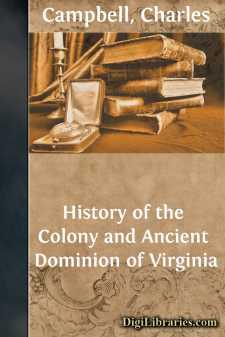Categories
- Antiques & Collectibles 13
- Architecture 36
- Art 48
- Bibles 22
- Biography & Autobiography 813
- Body, Mind & Spirit 142
- Business & Economics 28
- Children's Books 17
- Children's Fiction 14
- Computers 4
- Cooking 94
- Crafts & Hobbies 4
- Drama 346
- Education 46
- Family & Relationships 57
- Fiction 11829
- Games 19
- Gardening 17
- Health & Fitness 34
- History 1377
- House & Home 1
- Humor 147
- Juvenile Fiction 1873
- Juvenile Nonfiction 202
- Language Arts & Disciplines 88
- Law 16
- Literary Collections 686
- Literary Criticism 179
- Mathematics 13
- Medical 41
- Music 40
- Nature 179
- Non-Classifiable 1768
- Performing Arts 7
- Periodicals 1453
- Philosophy 64
- Photography 2
- Poetry 896
- Political Science 203
- Psychology 42
- Reference 154
- Religion 513
- Science 126
- Self-Help 84
- Social Science 81
- Sports & Recreation 34
- Study Aids 3
- Technology & Engineering 59
- Transportation 23
- Travel 463
- True Crime 29
History of the Colony and Ancient Dominion of Virginia
by: Charles Campbell
Description:
Excerpt
CHAPTER I.
1492-1591.
Early Voyages of Discovery—Sir Humphrey Gilbert—Walter Raleigh—Expedition of Amadas and Barlow—They land on Wocokon Island—Return to England—The New Country named Virginia—Grenville's Expedition—Colony of Roanoke—Lane, Governor—The Colony abandoned—Tobacco—Grenville returns to Virginia—Leaves a small Colony at Roanoke—Sir Walter Raleigh sends out another Expedition—City of Raleigh chartered—White, Governor—Roanoke found deserted—Virginia Dare, first Child born in the Colony—White returns for Supplies—The Armada—Raleigh assigns the Colony to a Company—White returns to Virginia—Finds the Colony extinct—Death of Sir Richard Grenville—Gosnold's Voyage to New England.
The discoveries attributed by legendary story to Madoc, the Welsh prince, have afforded a theme for the creations of poetry; those of the Northmen of Iceland, better authenticated, still engage the dim researches of antiquarian curiosity. To Columbus belongs the glory of having made the first certain discovery of the New World, in the year 1492; but it was the good fortune of the Cabots to be the first who actually reached the main land. In 1497, John Cabot, a Venetian merchant, who had become a resident of Bristol in England, with his son Sebastian, a native of that city, having obtained a patent from Henry the Seventh, sailed under his flag and discovered the main continent of America, amid the inhospitable rigors of the wintry North. It was subsequent to this that Columbus, in his third voyage, set his foot on the main land of the South. In the following year, Sebastian Cabot again crossed the Atlantic, and coasted from the fifty-eighth degree of north latitude, along the shores of the United States, perhaps as far as to the southern boundary of Maryland. Portuguese, French, and Spanish navigators now visited North America.
Dreadful circumstances attended the foundation of the ancient St. Augustine. The blood of six hundred French Protestant refugees has sanctified the ground at the mouth of St. John's River, where they were murdered "not as Frenchmen, but as heretics," by the ruthless Adelantado of Florida, Pedro Menendez, in the year 1565.
In the summer of the ensuing year he sent a captain, with thirty soldiers and two Dominican monks, "to the bay of Santa Maria, which is in the latitude of thirty-seven degrees," together with the Indian brother of the cacique, or chief of Axacan, (who had been taken thence by the Dominicans, and baptized at Mexico, by the name of the Viceroy Don Luis de Velasco,) to settle there, and undertake the conversion of the natives. But this expedition sailed to Spain instead of landing.
This region of Axacan comprised the lower part of the present State of North Carolina. The Spanish sound of the word is very near that of Wocokon, the name of the place, according to its English pronunciation, where the colony sent out by Raleigh subsequently landed.
In the year 1570 Father Segura and other Jesuit missionaries, accompanied by Don Luis, visited Axacan, but were treacherously cut off by him....


